6 female inmates, 5 things to watch for in their tell-all about life in Singapore’s women’s prison
Following the hit series Inside Maximum Security, CNA’s Inside The Women’s Prison offers a raw look at how Singapore’s female inmates cope with life behind bars, their struggle to stay straight and the pain of separation from loved ones.
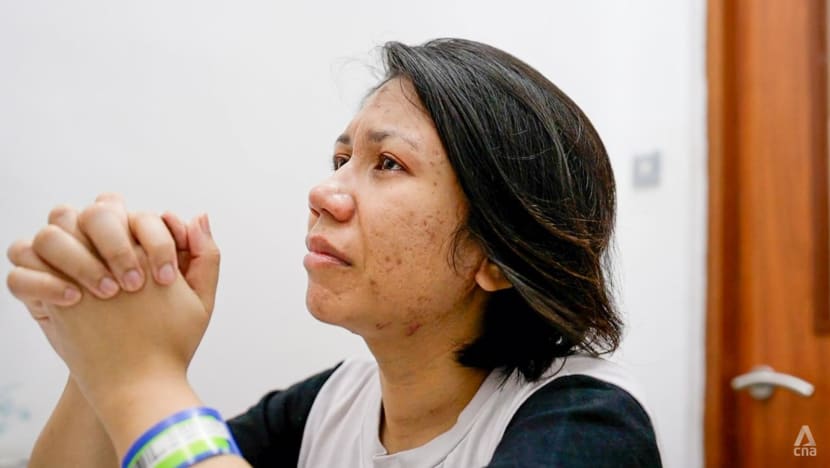
Prison inmate Nur Haziqah Husna Hassim about to get emotional as her family visits her face to face for the first time in a year.

This audio is generated by an AI tool.
SINGAPORE: When Nur Joanna Zulkepeli learnt that her prison release date had been pushed back by close to two months, she was secretly “quite happy”.
“Because if (it’s) deferred, I get to stay here and see my mum,” she said.
Joanna, 22, and her mother, Juliana Baba, 52, are both inmates in Singapore’s only women’s prison, serving time in different cells for separate drug offences.
But as with other inmates, who can receive two visits a month from loved ones, they are only permitted a 30-minute teleconference and a 20-minute face-to-face session, or two 30-minute teleconferences.
They are not allowed to touch each other, not even during special occasions like one that CNA witnessed.
“Happy birthday, Mummy! Happy birthday to you,” Joanna sang as she passed her mother a hand-drawn card while seated across from her.
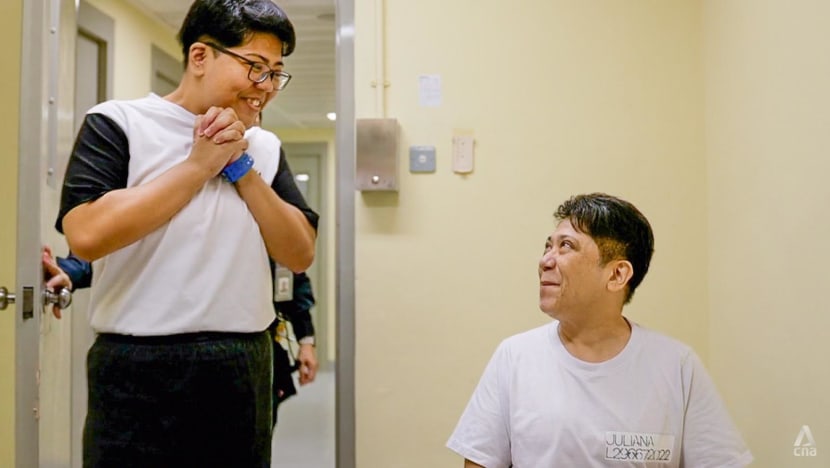
Juliana tearfully said to her later: “I pray for you every day, ‘Oh God, let this be the last time my daughter and I are incarcerated.’”
It is a glimpse of what life is like for Singapore’s female inmates, coming up in the series Inside The Women’s Prison, which follows the success of CNA’s Inside Maximum Security.
Told through the stories of six women, the three-part documentary reveals their struggles with incarceration and to stay out of prison, and the emotional toll of separation from their families. Here are five things that will grab you.
1. FIND OUT WHY THEY ENDED UP IN PRISON
Institution A4, previously known as Changi Women’s Prison, houses around 800 female inmates. They are mostly incarcerated for drug offences. Many of them also come from turbulent backgrounds, with traumatic experiences such as abusive relationships.
WATCH PART 1: Life in Singapore Women’s prison (46:20)
Juliana, who is serving her ninth jail term — this time for drug consumption and for failing to go for a urine test — recalled her ex-husband’s physical abuse and womanising ways.
“There was one day I was very, very stressed,” she said, recounting how she impulsively stole his drugs for herself. “I cried so much. … I relapsed after 12 years.”
As for Joanna, this is her second jail term, given to her for drug consumption.
“One puff led me to (serve) 16 months inside. I don’t even know why I took drugs. I just said I needed something, but actually, I was running away,” she said.
Others, like Christeen Jayamany, 47, were motivated mainly by financial stress. She had to stop work to care for her three children after her marriage soured and was caught trafficking drugs in exchange for a fast S$200.
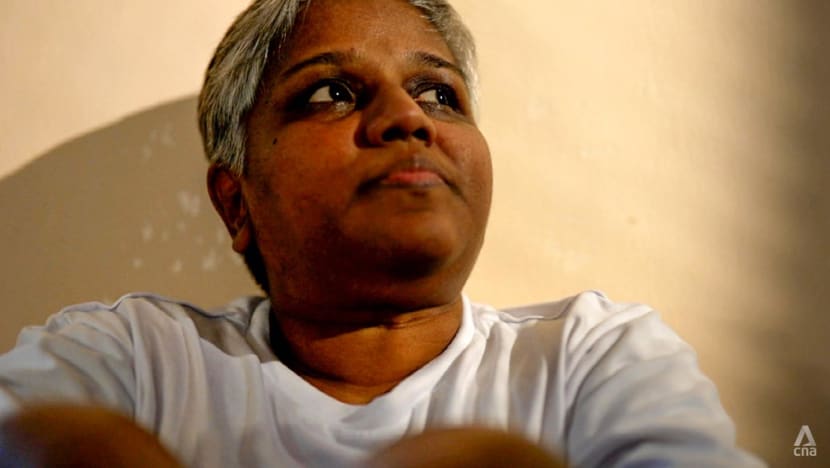
She is serving life imprisonment and has been behind bars since 2011, when her children were aged 11, eight and under two months. “(It’s a) heavy price,” she said. “Now I’m paying for it.”
2. SEE HOW THEY COPE WITH PRISON LIFE
Given the spartan conditions and stresses of regimentation, many inmates must get creative to make life in prison more bearable.
For Christeen, it is the little things that have the biggest impact on her mood.
One of her favourite hacks in prison is to rub small amounts of shampoo — bought with her allowance from her work programme — onto her clothes, using its scent as a form of perfume. “It boosts your confidence,” she quipped.
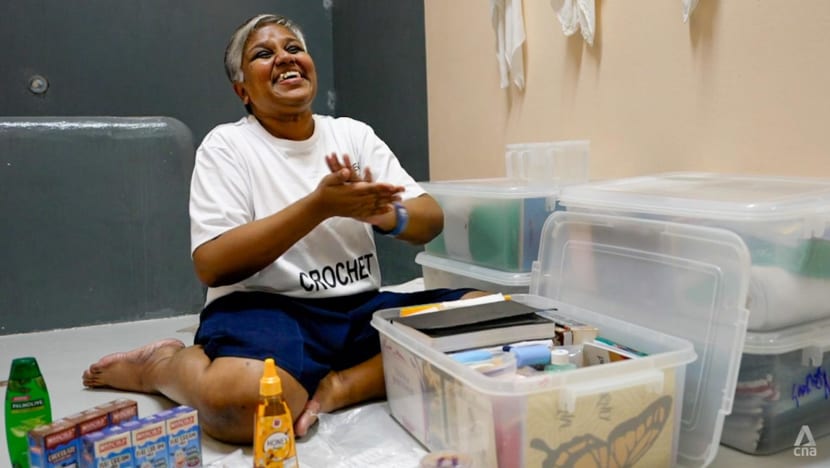
To boost her cellmates’ morale too, she will break out her stash of snacks, also bought with her prison allowance, and put together treats for special occasions such as birthdays.
For example, after adding a splash of orange juice to some bread, she kneaded it to make “cake”, topped off with roasted peanuts and peanut butter or jam.
“Actually, it’s not allowed because it’s an improvisation of food,” she said. “After (I make) it, we’ll eat it very fast.”
The taste is “so good”, remarked one cellmate, a teenager in reformative training. “It tastes like freedom because it’s very rare (to) eat this kind of thing inside prison,” the teen said, thanking Christeen for the “early birthday cake”.
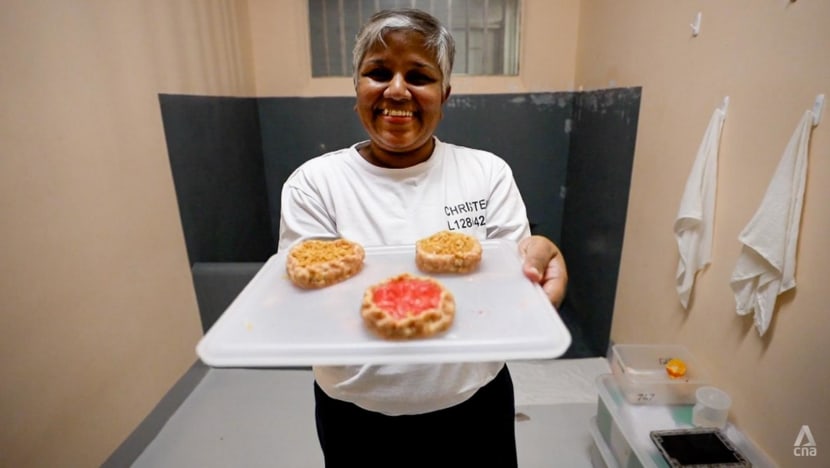
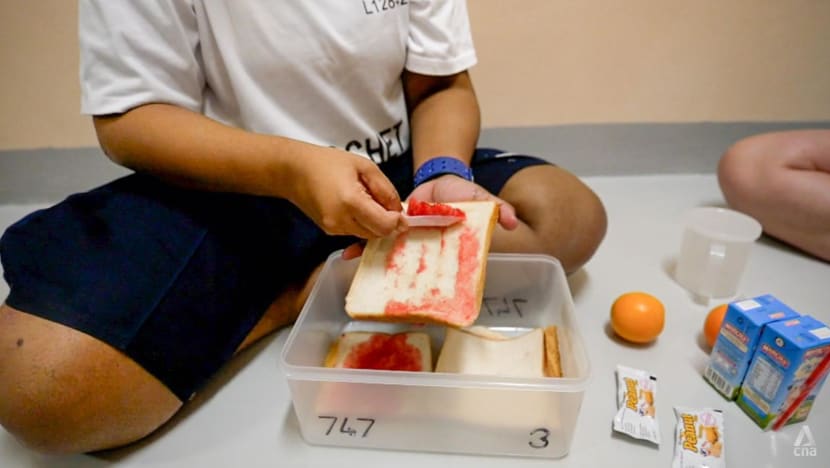
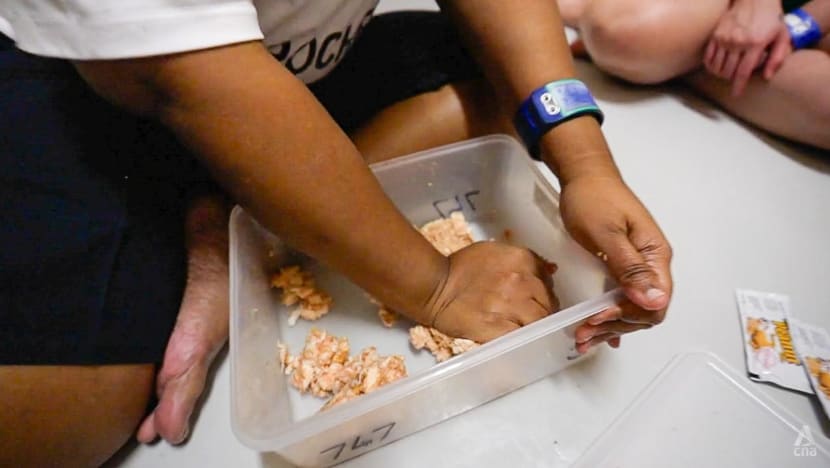
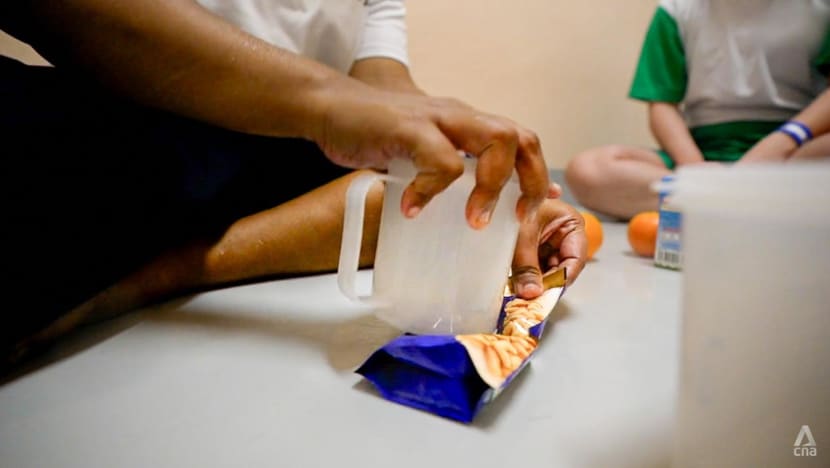
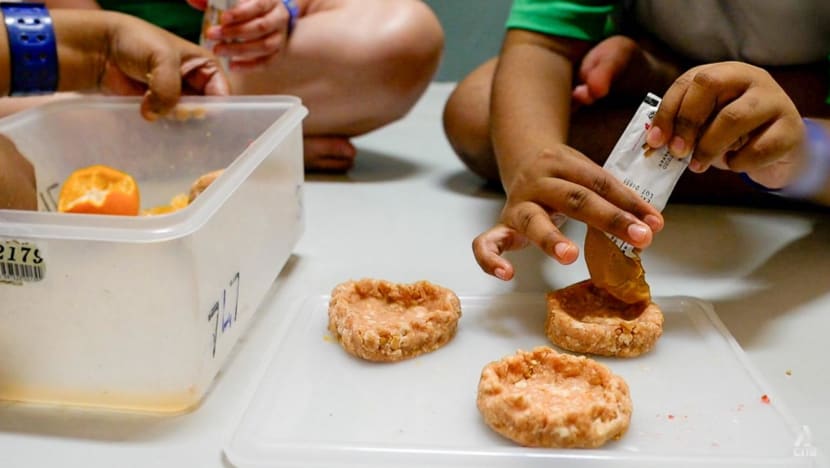
With her cellmates enjoying the improvised cake and “the smile it brings to their faces”, said Christeen, “it makes my day”.
3. WATCH HOW CONFLICTS INEVITABLY ARISE
As the women must live in close proximity, tensions will also rise — sometimes to a flashpoint and over the slightest misunderstandings.
On one occasion during yard time, 58-year-old Halen Teo got into a fight with two other inmates who accused her of insulting one of their drawings.
“Don’t put words in my mouth,” snarled Teo, who is serving her 12th term for drug consumption. “I never said the artwork is not nice. I only said the artwork isn’t colourful enough.”
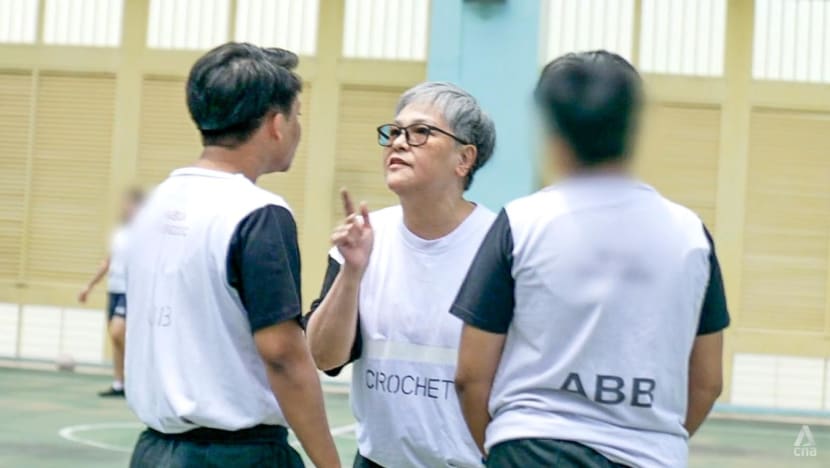
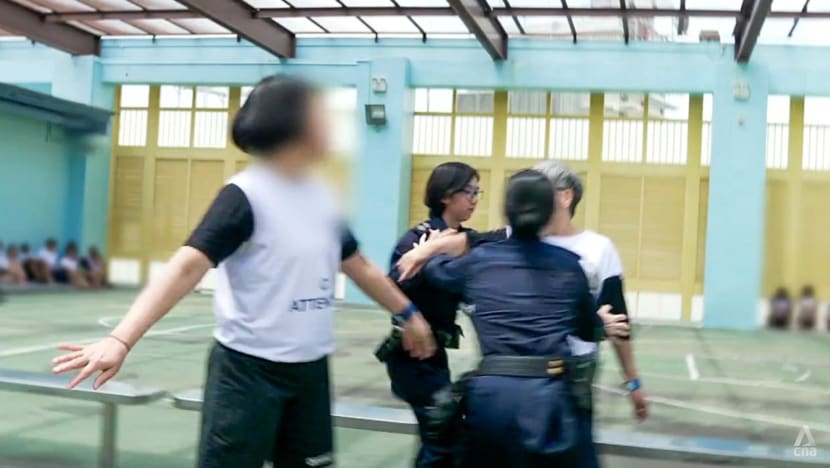
Such incidents are the reason the inmates are placed in groups of threes or fours in cells, and never in pairs.
“This is … to prevent any (incident) where inmates fight with (one) another, (but) there’s no witness to the scene,” said Superintendent Lim Hui Juian, the officer in charge of one the correctional units in Institution A4.
At other times, altercations between inmates and officers can also happen.
When an officer told Joanna she could no longer participate in an arts programme because of a dispute with other inmates, she started shouting at the officer, refused to return to her cell and then banged the door once inside.
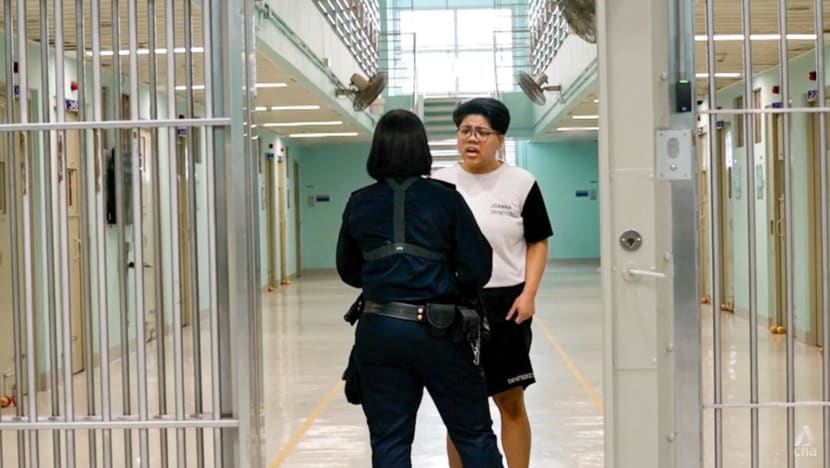
“(If) you want to bang (on) the door (and) scold vulgarities, I’ll submit a report,” warned Nurbaizurah Mahmod, the officer in charge of the Arts Behind Bars programme.
“So what? You think I care, is it?” retorted Joanna, who later broke off a part of her cell mirror and began cutting herself. That was why her prison release was deferred by close to two months.
4. DISCOVER THEIR STRUGGLE TO STAY OUT OF JAIL
Many inmates often find it hard to keep out of jail in the first place. “Every one month, two months, half a year, one year, I’ll be back,” said Teo.
Faced with personal troubles, uncertainty over holding down a job and the stress of taking care of their families, many of the women end up finding comfort in the structure and stability prison life brings.
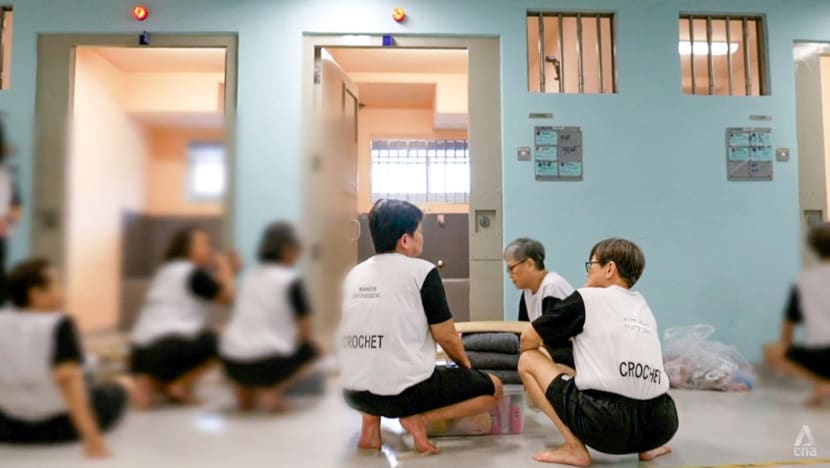
Koh Yu Xin, incarcerated for the fourth time, said she has always relapsed within a year. Her latest relapse occurred seven months after her last release. “I think I spent, like, one-third of my life inside prison,” said the 35-year-old.
She has been working towards her release this month, looking for jobs with the prison’s assistance. “Securing a job means at least I won’t be idling at home,” she said.
Maybe it’ll lessen the risk of me wanting to find (the wrong) friends or drugs.”
But she is worried that her resolve to stay drug-free will weaken when faced with the “many distractions” of the outside world.
“I’m worried about not being able to adapt when I step out of (prison) because I’ve been here for two-plus years already,” she said. “You somehow find comfort in this place.”
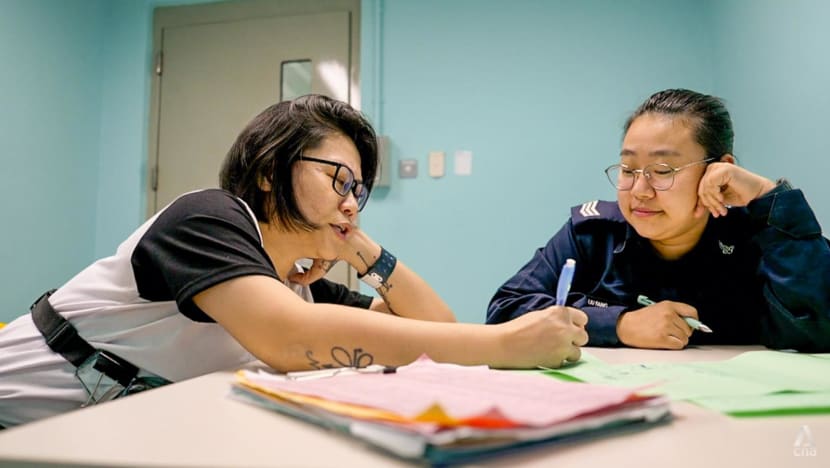
As for Joanna, she felt overwhelmed by the prospect of navigating life outside prison without her mother by her side.
“I just don’t know how I’m going to survive outside,” she told her cellmates before her release in February. “Now I have to figure it out myself.”
5. WITNESS THE HEARTACHE OF SEPARATION
It is the pain of being separated from their loved ones that is above all other hardships of prison life for the inmates.
The guilt of their past actions, their worry about their families and the regret over lost time weigh upon them every day behind bars.
“I owe my children a big thing. I left them for more than 10 years to be on their own,” said Juliana, who “can never forgive (herself)” for all she has done.
“Why (did Joanna) smoke drugs? (For) half of it, I blame myself also. I didn’t discipline (her). I didn't bring her up properly.”
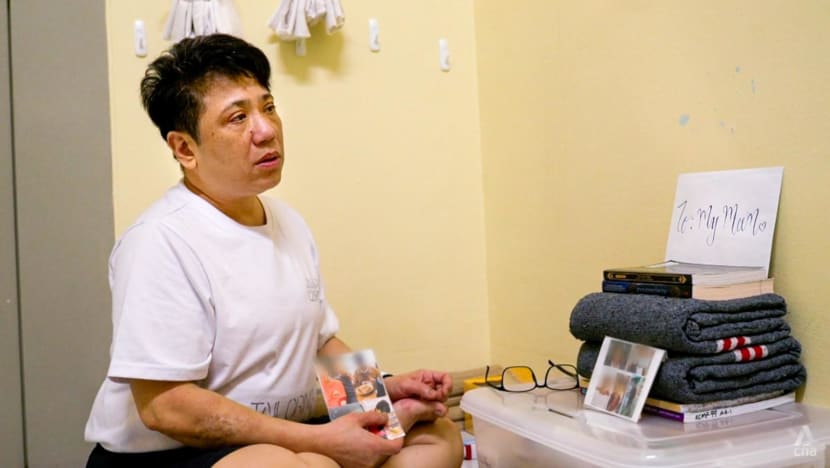
Nur Haziqah Husna Hassim, 29, who is in prison for the fourth time for drug consumption, relapsed when her mother died two months after the birth of her third son. She was also battling postnatal depression.
Her son was six months old when she re-entered the women’s prison. “I’ve missed all of his first moments, his first words, his first steps,” she said. “As a mum, I feel so useless.”
She had not seen any of her children face to face this past year as her family had not visited her.
So she was surprised when a friend wrote to inform her that her brother would be paying her a face-to-face visit. “I was so happy I cried the whole day,” she said.
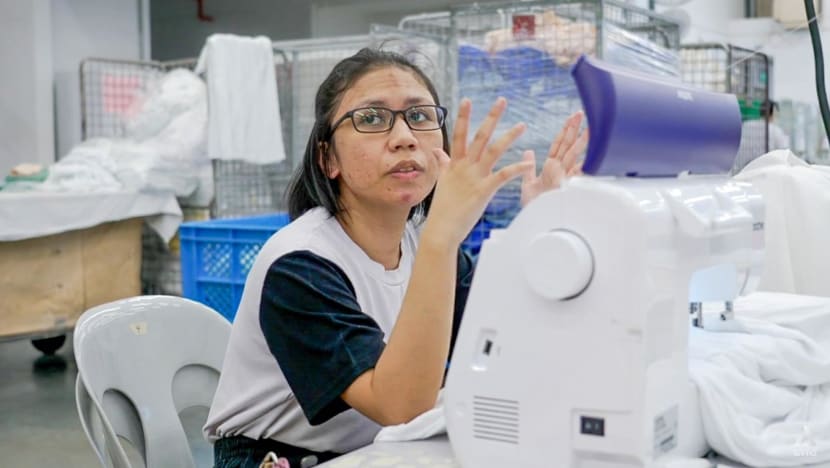
Still, she was unsure if he would be bringing along her children. “I’m praying hard that I can see my (youngest) son again,” she said. “Now he’s 18 months old, and I don’t know (what) he looks like.”
She told CNA she intends to be present for her children once she is released, which is due to happen in November. “I don’t want my kids to go … without a mother’s love any longer.”
Episodes 2 and 3 of Inside The Women’s Prison will go out tonight on CNA Insider’s YouTube channel at 9pm. The series will also air in the 9pm time slot from tonight until Wednesday.



















